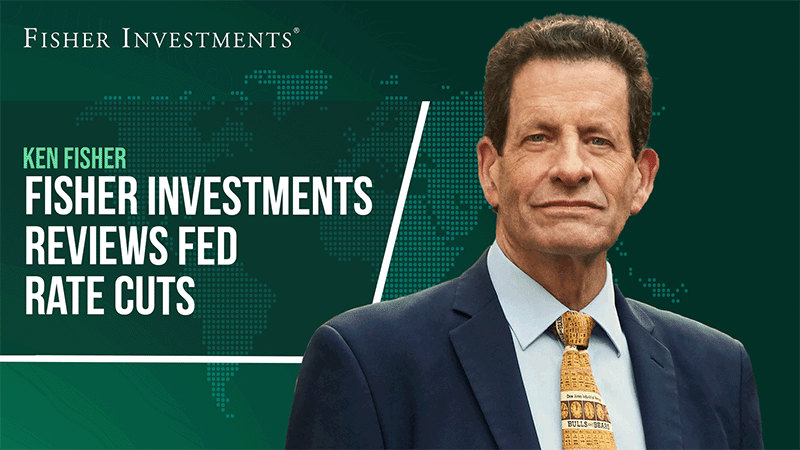Personal Wealth Management / Market Analysis
The Student-Loan Crisis That Wasn’t
In June, headlines decrying the student-loan rate’s upcoming July 1 rise seemed par for the course—so was politicians’ late-to-game solution this week.
Did you know we’ve been in the midst of a student-loan crisis for the last few weeks? At least that’s what June’s headlines exclaimed would happen after student-loan rates doubled from 3.4% to 6.8% on July 1. Apparently, the increase would cripple seven million college students with debt, preventing them from affording necessities or fully participating in the economy after graduation—a negative for everyone, it seemed. And some feared this newfangled debt crisis would be yet the latest one to hamper markets. Yet, when the student-loan rate rise actually occurred, nary a word was said, and markets barely blipped. The market seemingly properly scaled the size of this event—and showed political deadlines are fungible.
Thursday the Senate took a step toward solving this utterly self-created crisis by agreeing on a tentative bi-partisan deal to lower the rates again—17 days later. The deal must now be reconciled with a House version of the same, prior to its submission to President Obama. That it took so long for politicians to devise a solution to what was heralded as an economic and social disaster simply highlights politicians’ blasé approach to political deadlines. Even before the hike kicked in, politicians on both sides expressed little concern about potentially missing the deadline. They knew they could simply move the legislation’s effective date to cover the period in question—and their own necks.
Which is exactly what happened. The deal, which ties student-loan rates to financial markets’ fluctuations, was initially proposed in President Obama’s budget, and a variation was adopted by House Republicans shortly thereafter. At the time, Senate Democrats rejected the deal, concerned floating rates could spike higher. They instead wanted to extend the 3.4% student-loan rate’s expiration date, which was quickly approaching. Yet after the deadline passed, politicians kept uncharacteristically quiet. Were they aware loudly politicking on student-loan rates after July 1 would remind folks they’d risen? And were they afraid voters would blame them? (Answers: Yes and yes.)
Under the new deal, student-loan rates would be tied to the 10-year Treasury rate, but capped. For example, undergraduate student-loan rates will be pegged at 2.05 percentage points more than the last 10-year Treasury yield seen before June 1 each year and capped at 8.25%. Loan rates for grad students and parents will be treated similarly. But since June 1, 2013, already passed, the deal would set student-loan rates for the rest of this year at 3.86%—to (conveniently) retroactively take effect on July 1.
Effectively making student-loan rate’s initial expiration date arbitrary—like most political deadlines. This isn’t necessarily a bad thing, however. Ignoring deadlines can give politicians more time to find a less economically disruptive solution.
For another example, the sequester’s deadline passed months ago, and despite doom-and-gloom headlines, there has been little-to-no broad economic fallout. It’s true some jobs were lost and some public employees experienced cut hours—which is no doubt difficult for those individuals. But on a national level, the US economy is still growing, and the US private sector continues expanding where the public sector shrinks.
Showing, not only do politicians care less about political deadlines than they occasionally tout, the US economy often doesn’t care either—for a couple reasons. First, political deadlines are generally widely known by the time they hit—even the student-loan rate hike was widely expected though it passed quietly—and the most probable outcomes are already identified and largely discussed. Meaning markets have plenty of time and information to digest before deadline-day to mitigate much market-moving surprise. Second, if the actual outcome turns out to be a less politically palatable one, like 6.8% student-loan rates, there is endless potential for politicians to enact retroactive policy to fix their blunder.
In fact, the only political deadlines that seem to be taken seriously are elections—deadlines politicians can’t control. But even then, market-moving surprises are few. Generally, investors’ fears based on upcoming or past political deadlines are often overblown. In the end, they likely impact headlines more than US politics or economics.
If you would like to contact the editors responsible for this article, please message MarketMinder directly.
*The content contained in this article represents only the opinions and viewpoints of the Fisher Investments editorial staff.
Get a weekly roundup of our market insights
Sign up for our weekly e-mail newsletter.

See Our Investment Guides
The world of investing can seem like a giant maze. Fisher Investments has developed several informational and educational guides tackling a variety of investing topics.





